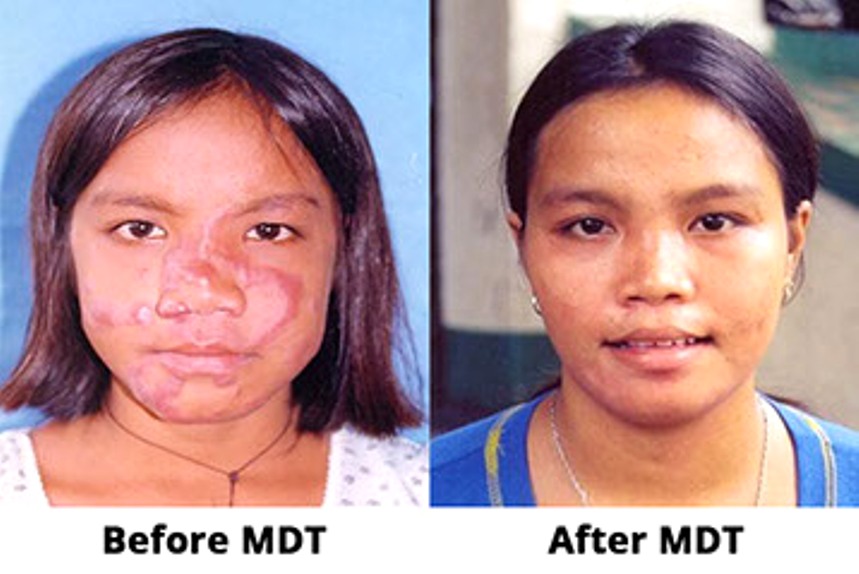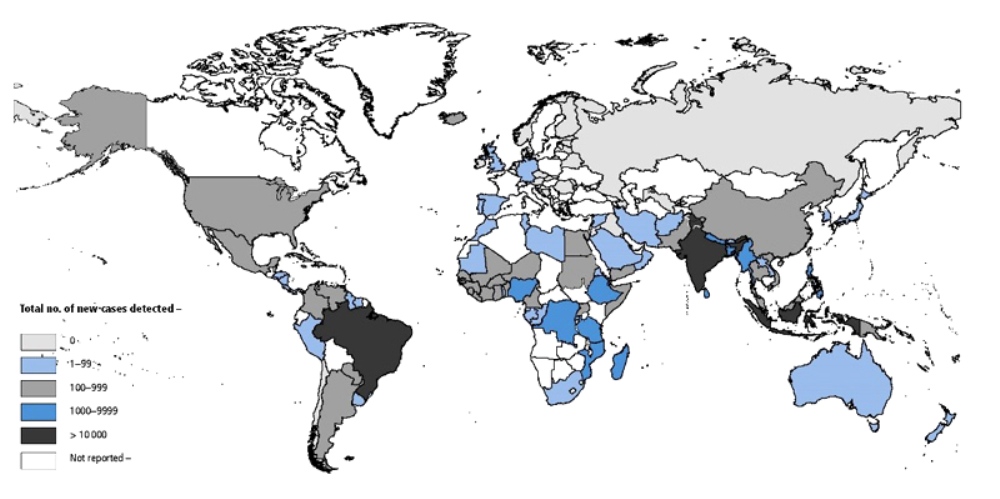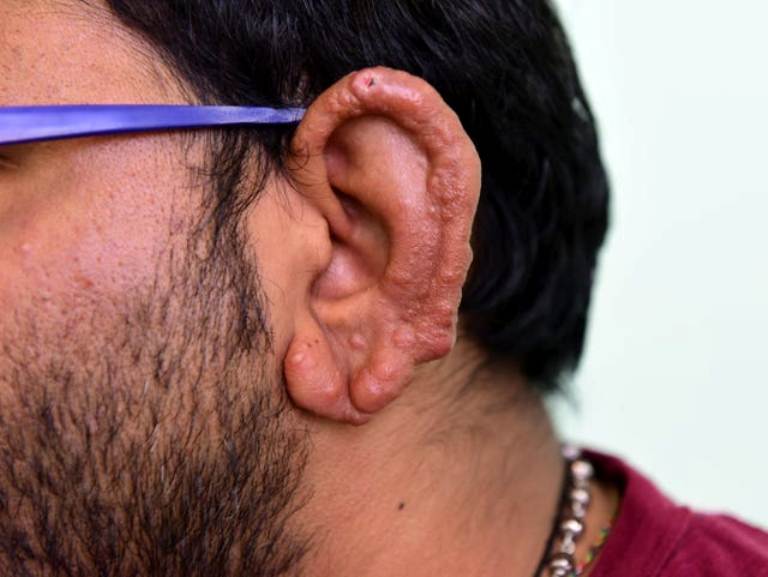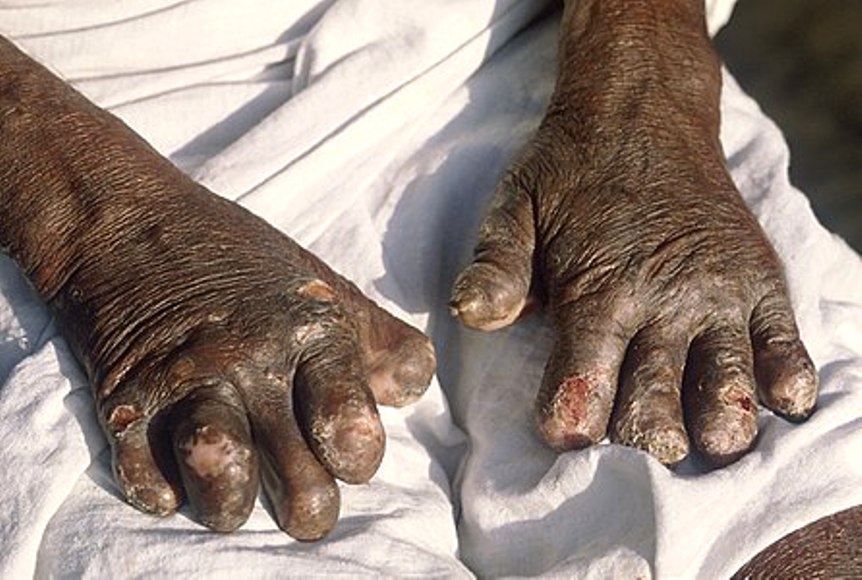

On this Month's Morbidly Fascinating Page:
Hansen's Disease: What is it, and could you get it?
IN THE ARCHIVES:
Accidental Photos
Deaths on Mt. Everest
Titanic Graveyard
Time Travel
Mike the Headless Chicken
Disgusting Food Museum


THE GOOD NEWS IS THAT LEPROSY CAN BE CURED WITH MULTI-DRUG THERAPY (MDT)!

GEOGRAPHIC OF COUNTRIES THAT HAVE HANSEN'S DISEASE IN THEIR POPULATION

LEPROSY IS AN ANCIENT DISEASE
_nodular_leprosy.jpg)
Leprosy spread to the southern states of the United States between the sixteenth and eighteenth centuries. The first known cases of leprosy in Louisiana were in 1758. In 1866, French immigrants with leprosy were recorded in Louisiana, and leprosy was recorded in San Francisco in 1875.
In 1921, The United States Public Health Service (USPHS) took over the state-controlled leprosarium in Louisiana; it was renamed the United States Marine Hospital Number 66, the National Leprosarium of the United States. Through most of the twentieth century, the National Leprosarium was known as Carville. It was the main institution caring for leprosy patients in the continental United States; at its peak, it housed 400 patients. It was also at the forefront of leprosy research: under the directorship of Guy Henry Faget in the 1940s, the new sulfone drugs were trialled on volunteer patients. Sulfone therapy proved to be the most effective leprosy treatment yet available, and it was quickly adopted by many leprosy institutions worldwide as a replacement for chaulmoogra oil treatment.
THERE ARE MODERN CASES OF LEPROSY IN THE UNITED STATES

Leprosy, although quite rare, continues to appear in the United States, a new U.S. government study reports. Approximately 100 new cases are reported in the United States each year, researchers at the U.S.Centers for Disease Control and Prevention said. The above man was photographed in New Jersey in 2017.
PHOTOS OF PERSONS WITH ADVANCED HANSEN'S DISEASE (LEPROSY)
WARNING: GRAPHIC




The medical name for leprosy is Hansen’s disease. Norwegian doctor Armauer Hansen was the first to view the bacillus under a microscope in 1873. An electron microsope magnified photo of Mycobacterium leprae bacteria is on the top of this page.
HANSEN'S DISEASE (LEPROSY) IS HARD TO CONTRACT, SO DON'T PANIC
Most people will never develop the disease even if they are exposed to the bacteria. Approximately 95% of the world population has a natural immunity to leprosy. Overall, the risk of getting Hansen’s disease for any adult around the world is very low.
You may be at risk for the disease if you live in a country where the disease is widespread. Countries that reported more than 1,000 new cases of Hansen’s disease to WHO between 2011 and 2015 are:
- Africa: Democratic Republic of Congo, Ethiopia, Madagascar, Mozambique, Nigeria, United Republic of Tanzania
- Asia: Bangladesh, India, Indonesia, Myanmar, Nepal, Philippines, Sri Lanka
- Americas: Brazil
You may also be at risk if you are in prolonged close contact with people who have untreated Hansen’s disease. If they have not been treated, you could get the bacteria that cause Hansen’s disease. However, as soon as patients start treatment, they are no longer able to spread the disease.
CAN HANSEN'S DISEASE BE CURED?
Leprosy can be cured with multi-drug therapy (MDT), a combination of three antibiotics: rifampin, clofazimine and dapsone. Treatment can take from six months to a year, sometimes longer. People are no longer contagious after about one week of MDT.
CAN ARMADILLOS CAUSE LEPROSY?

Armadillos are the only other animals besides humans to host the leprosy bacillus. In 2011, the New England Journal of Medicine published an article formally linking the creature to human leprosy cases—people and armadillos tested in the study both shared the same exact strain of the disease.
So, what’s unique about armadillos that make them good carriers? Likely a combination of body temperature and the fragile nature of the disease. leprosy is a “wimp of a pathogen." It’s so fragile that it dies quickly outside of the body and is notoriously difficult to grow in lab conditions. But with a body temperature of just 90 degrees, the armadillo presents a kind of Goldilocks condition for the disease—not too hot, not too cold. Bacterial transmission to people can occur when we handle or eat the animal.
“The risk of acquiring leprosy from armadillos remains extremely low,” said Dr. James Krahenbuhl, director of NHDP. “Still, armadillos have been suspected as a source of human infection in the Gulf Coast area for 40 years. I wouldn't mess around with their feces.”
For more information, go HERE and HERE and HERE